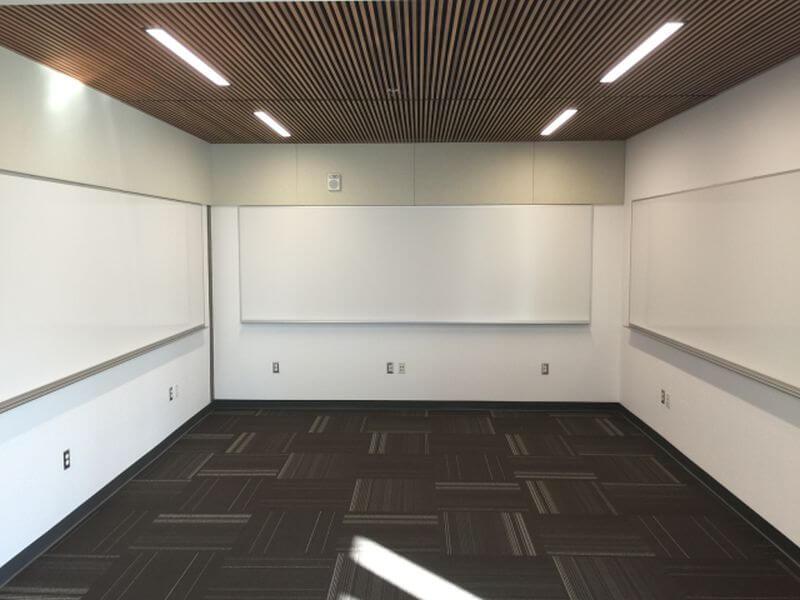Follow These Tips For Awesome Audio Recordings
By: Daniela Reeve Published:We recently took a poll – who loves correcting a transcript after you’ve paid to have it done professionally? Included is a photo of the room of people that responded “Me!”

However, the great news about having Speechpad transcribe your audio is that you won’t have to spend your valuable time correcting your content.
But let’s back up a bit…
Even though our superstar human team is experienced in transcribing all kinds of media, there are a few things you can do to capture a high quality recording and ensure a complete and accurate transcript.
We’re going to walk you through a few (not so) secret tips to create quality audio for transcription.
1. Ready Your Equipment
This seems pretty simple, right?
- Make sure you’re not on top of your microphone, but don’t stand on the opposite side of the room.
- Place the mic at a comfortable distance. All speakers should face it, and speak clearly.
- Use Speechpad’s Record-A-Call feature to easily record phone calls.
- Make a test recording. If you have trouble hearing or understanding yourself, your transcriber will too.
Here’s what Brian Reeve, Our Director of Engineering, Has To Say –
If only one person is speaking, you should use a unidirectional mic. When pointed at the speaker, it is better at picking up one voice. You’d be surprised how much of an impact just pointing the mic at the speaker can have on audio quality.
If multiple speakers are present, use an omnidirectional mic. It has the capability to pick up speakers positioned around the mic. Be careful though, the omnidirectional mic will tend to pick up more ambient noise.
If using a built-in mic, be aware of it’s location on your laptop, phone, etc. If you’re having trouble finding it, a quick Google search should do the trick. Do a test run, listen to the results, and make any necessary adjustments.
2. Ready Your Space
- Don’t record at the gym, on a crowded playground, underneath a 747 about to takeoff… you get the idea.
- Do record in a quiet space.
- Ensure background noise is at a minimum. Unused or unnecessary devices should be off.
- Don’t run the dishwasher, washing machine, etc.
- Don’t record in the middle of a giant, empty room unless you want your audio to reflect that. If you hear any echoes on your test recording, move into a smaller space. Acoustics matter.
3. Ready Your Mind
- Take a few breaths.
- Clear your mind so you can focus on what needs to be said, not what time Jimmy has to be at karate tonight.
- Take your time. We can work with you on quick turnaround times, so you don’t have to worry about that.
4. Ready Your Body
- Hydrate yourself. Have water handy so you can take sips throughout, but don’t chug or gulp because the mic will pick that up.
- Try a few tongue twisters before you begin. Seriously, grab one of your kid’s Dr. Seuss books and read it aloud. You might feel silly, but it’ll help and you may even find it puts your mind at ease as well.
- Speak in a conversational tone. Unless your audio is specifically trying to demonstrate fast or slow talking, speak as though you were having a discussion with someone across from you.
- Try not to dwell on your speech. Let is come as naturally as possible.
Consider This: Tips from our transcribers –
We can all speculate on how great, or not so great, your audio is. When it comes down to the transcribing part, who better to get tips from than those actually working on your files? I asked for some input from our team and here’s what they had to say:
Patti suggests that you “Try to speak clearly. If there’s more than one person, try not to talk over each other and limit the ums, uhs, likes, and you knows. These are the first things that come to mind. Consider a windscreen for your mic if recording outside.”
Michelle adds, “Crosstalk is probably my biggest one. Especially in focus groups.
Do a mic check before starting content, when possible. I have more issues with too far from [the microphone], than too close.”
“Use a service specifically designed to record phone meetings, rather than have a recording device sitting next to a speakerphone. This is especially helpful when the person on the other end is also using a speakerphone.” Anela recommends. “Don’t try to record an interview in a busy restaurant or bar, especially if there’s loud music playing. If taking typed notes while recording, have the recording device somewhere other than right next to the keyboard. If there’s a meal being served, don’t have the recording device somewhere that the cutlery against the plates will drown out the voices. (Not to mention, that one can be literally painful to hear).”
Anela goes on to say, “If the recording device is in a pocket, moving will cause the fabric to rub against it and make the conversation unable to be heard. If you have numerous people and would like everything said accurately attributed, have each person identify themselves when they start to speak. Don’t speak too fast. Don’t let animals lay on or too close to the recording device. It’s very hard to hear a conversation when a dog is panting or a cat is purring directly into the microphone.”
Jill, our resident Speechpad rockstar and Director of Customer & Worker Support says, “Keep the environment consistent. Don’t go from a quiet taxi ride to a night club while recording.”
Katrina states that when positioning your recording device, “Keeping it in one spot, relatively central to all speakers is best but waiting for the device to stop moving and then speaking also works.”
Follow these tips and you’ll keep your transcriber frustration free and from leaving their headset in the dust!


